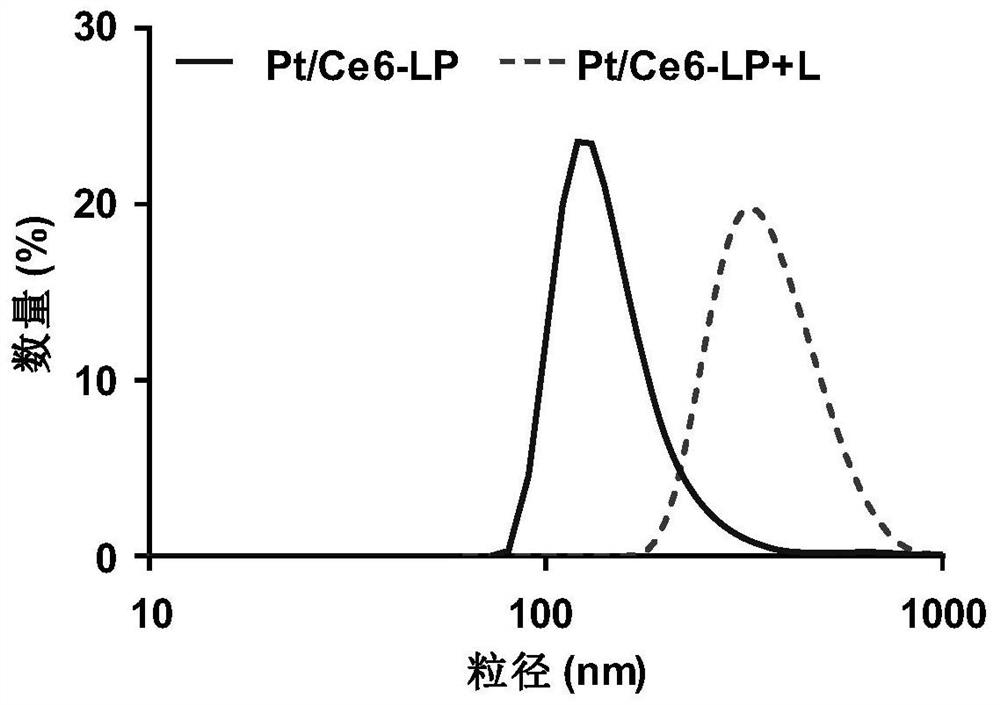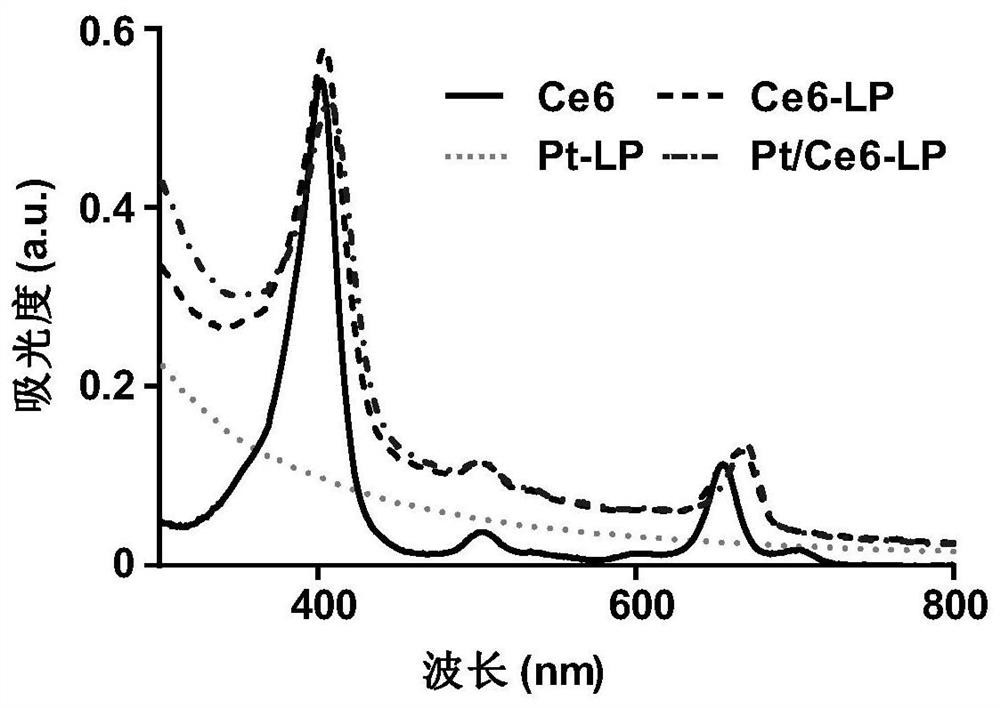Photosensitive liposome and application thereof
A liposome and photosensitive technology, applied in liposome delivery, photodynamic therapy, medical preparations of non-active ingredients, etc., can solve problems such as difficult to meet urgent needs
- Summary
- Abstract
- Description
- Claims
- Application Information
AI Technical Summary
Problems solved by technology
Method used
Image
Examples
preparation example Construction
[0042]The preparation method of the above-mentioned photosensitive liposome can be prepared according to the conventional photosensitive liposome preparation process, for example: various lipid materials (including at least one unsaturated phospholipid), photosensitizer and active ingredients (such as lipid Soluble anticancer drug tetravalent cisplatin), dissolved in chloroform:methanol (5:1) solution, at 55-60°C, the organic solvent was removed by rotary evaporation to obtain a film that was dry and uniformly attached to the bottom of the glass bottle. The obtained film is hydrated with ultrapure water at room temperature to form a uniform liposome solution, so that the concentration range of the photosensitizer in the photosensitive liposome is 10-40 μg / mL. Then, extrude through a polycarbonate membrane (for example, with a pore size of 100 nm), and repeatedly extrude several times, and the obtained tetravalent cisplatin photosensitive liposomes are stored at 4-7° C. for futu...
Embodiment 1 4
[0062] The preparation of embodiment 1 tetravalent cisplatin photosensitive liposome
[0063] (1) Materials and dosage: (the dosage of 5mL liposome, the following table 1)
[0064] Table 1
[0065]
[0066] (2) Preparation method
[0067] Weigh various lipid materials (including unsaturated phospholipids), photosensitizers and fat-soluble anticancer drugs according to the amounts in Table 1, dissolve them in 12mL of chloroform:methanol (5:1) solution, and store at 55-60°C The organic solvent was removed by rotary evaporation to obtain a dry film that evenly adhered to the bottom of the glass bottle. The obtained film was hydrated with 5 mL of ultrapure water at room temperature for 10 min to form a uniform liposome solution. Then, it was squeezed through a polycarbonate membrane with a pore size of 100 nm. After repeated extrusion 5 times, it was loaded into a cellulose acetate dialysis bag (MWCO: 3500 Da) and dialyzed in water for 24 hours. The obtained tetravalent c...
experiment example 1 4
[0074] Characterization of experimental example 1 tetravalent cisplatin photosensitive liposome
[0075] Use a dynamic light scattering instrument (DLS) to measure the tetravalent cisplatin photosensitive liposomes prepared in Example 1 and the tetravalent cisplatin photosensitive liposomes (0.5W / cm 2 , 3min) particle size, the test results are as follows figure 1 As shown, the average particle size of tetravalent cisplatin photosensitive liposome is 128nm. After laser irradiation, due to the oxidation of phospholipids, the tetravalent cisplatin photosensitive liposomes undergo membrane fusion, which makes the tetravalent cisplatin photosensitive liposomes combine together and increases the particle size of the photosensitive liposomes.
[0076] Draw 10 μ L of prepared tetravalent cisplatin photosensitive liposomes with a pipette gun and irradiate with 650 nm laser (0.5 W / cm 2 , 3min) after the tetravalent cisplatin photosensitive liposomes, dripped onto the special copper...
PUM
 Login to View More
Login to View More Abstract
Description
Claims
Application Information
 Login to View More
Login to View More - R&D
- Intellectual Property
- Life Sciences
- Materials
- Tech Scout
- Unparalleled Data Quality
- Higher Quality Content
- 60% Fewer Hallucinations
Browse by: Latest US Patents, China's latest patents, Technical Efficacy Thesaurus, Application Domain, Technology Topic, Popular Technical Reports.
© 2025 PatSnap. All rights reserved.Legal|Privacy policy|Modern Slavery Act Transparency Statement|Sitemap|About US| Contact US: help@patsnap.com



